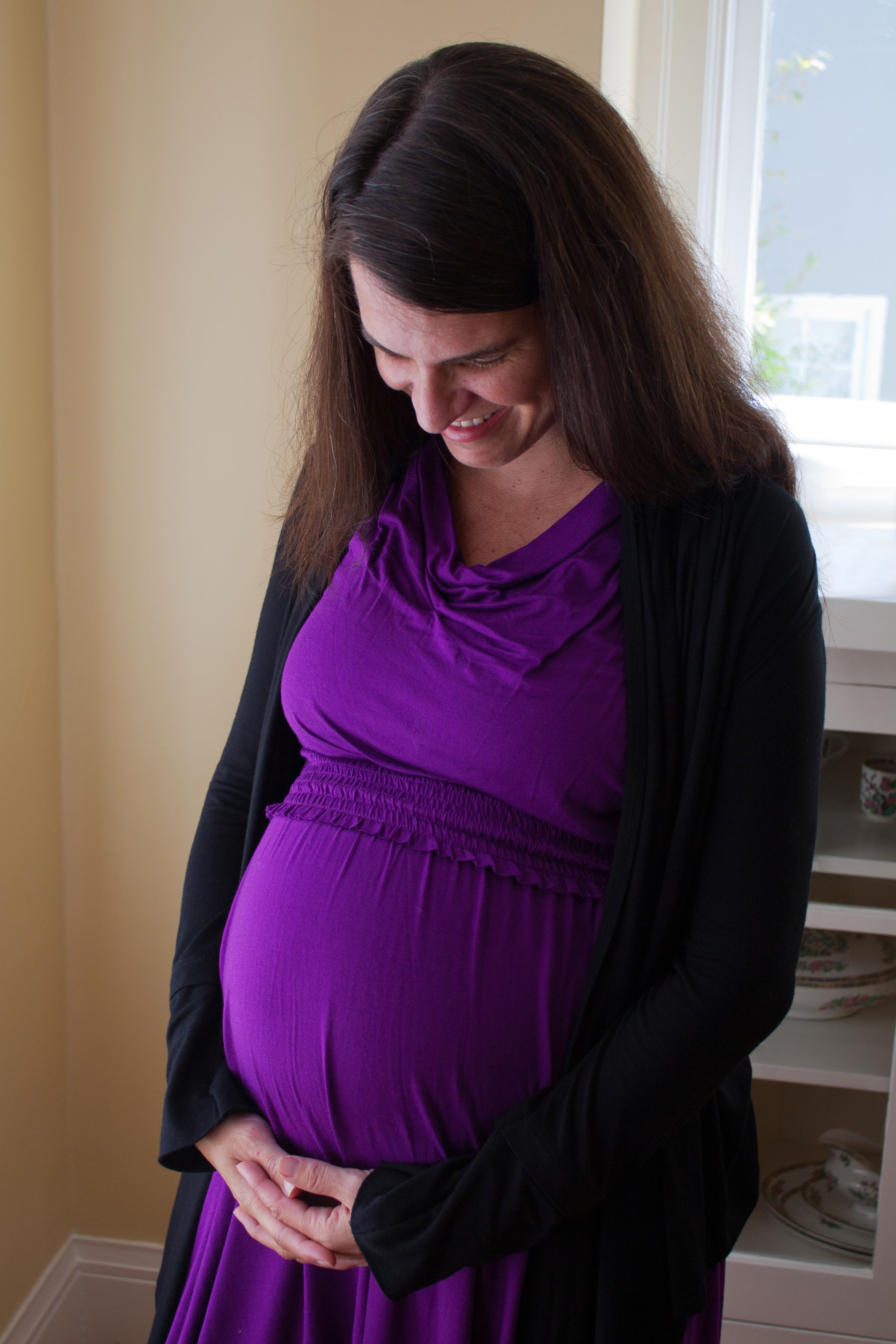Six months after my C-section, my ob-gyn marveled at the tidiness of my surgical scar. “Look at that! Who was your surgeon?” she crowed.
I smiled. I hadn’t peeked at the scar, which barely registered in my consciousness. The first months with infant twins, I cared only about survival and sleep. Besides, the skin above that faint gray C-section line was so incredibly strange, it wouldn’t have mattered if my doctor had installed an actual metal zipper at the point of the incision.
I gained 70 pounds during my pregnancy. I’m 5’3″, so that meant by the second trimester, strangers eagerly remarked that I “must be due any day.” The picture below is of me at 20 weeks, laughing because my husband had instructed me to “look serene.” In the final months, my front grew so heavy it hung to my thighs. When I walked, I had to carry my midsection.

After the birth, the weight came off, but the skin on my midsection had weathered beyond recognition. This was my pound of flesh — literally. It hung, uncomfortably dangling, payback for the hard-won gift of children. There’s even a word for this in Twinworld: “twin skin.”
For the first year of my sons’ lives, gratitude outshone any misgivings I might have had about my post-pregnancy body. I was alive! My twins were healthy! In contrast to the pregnancy, I could walk without creaking joints, sleep on my stomach, run for miles. I didn’t once think my body should look any different. My husband loved me, and I could balance my babies on the soft layer of paunch.
Fast-forward to year two. Suddenly, I did have a “normal-looking” pregnancy — except I wasn’t pregnant at all. The twin skin just made it look like I was, and it left me dismayed. Finally, I had enough ease in parenthood to stand in front of a mirror and see that crumpled belly surface as a lingering problem.
I compared notes with my beloved friend Tina, who also has twins.
“My abdomen is strange, too,” she reassured me. “My doctor said it would take two years to get my body back.”
“Ha, mine said ‘never’!” I told her. I suddenly remembered my ob-gyn perusing the scabbed, distended skin over my double baby bump and saying, “You’re body will never be the same.” I’d willfully blocked her out. I loved my exercise endorphins almost as much as morning caffeine, and figured that would do the trick.
I recounted the rest to Tina. “My doctor said, ‘your skin is like a rubber band, with some amount of elasticity. But if you stretch a rubber band past a certain point, it doesn’t bounce back.'”
Tina chuckled. “Maybe my doc thinks I’ll forget by year three.”
I didn’t forget. If anything, my vanity peaked. I spent time looking for products to “control” the situation, as in “control top” and controlled acceptance. I wasn’t going to do anything major, like surgery, and I didn’t need the excess to go away. I just wanted it to look a bit better. I got greedy. I wanted to have it all. Why couldn’t I be a 40-something mom of twins with a younger-looking body? Isn’t that the kind of question that makes Spanx a billion-dollar industry? I’m all for bulletproof shapewear, but at some point, that Kevlar must come off, and we must inhale, exhale and be with ourselves.
I keep my collection of gut-sucking camisoles in a top drawer into which I also stick random items I’m not sure how to file. One day I came across a photo of me in my twenties, and it struck me how much I never wanted to go back. Those were sometimes rough and lonely years — even with a fit, flat stomach. I liked myself in my mom form more than I ever had when I conformed to the social “ideal.”
Another friend of mine used to say, “Why is it that when I make a mistake at work, suddenly, my butt is also too big?” The way we see ourselves is defined by self-esteem.
Now, after three years, I’ve come to think of my midsection as an elder. It has time-traveled, its aging accelerated by the hardship of gestation and birth. The skin that covers my abdomen is the perfect banner of my twin pregnancy and what it means to be stretched to the limit.
Perhaps, though, it’s beyond former limits where wisdom can be found. Maybe my twin skin has gone ahead into old age to tell me a few key things. For instance, it really doesn’t matter how I look. Maybe the twin skin has been exhausted by my good luck: The love in my life has greatly expanded too.
Throughout our lives, our bodies speak to us in a wordless animal language. I want to listen to the message of my rumply midriff, to the part of me who’s lived through hard things, but can now be soft.
This is what my post-pregnancy body has to teach me: I will never be the same. To be stretched is also to grow, in all the ways that count.




